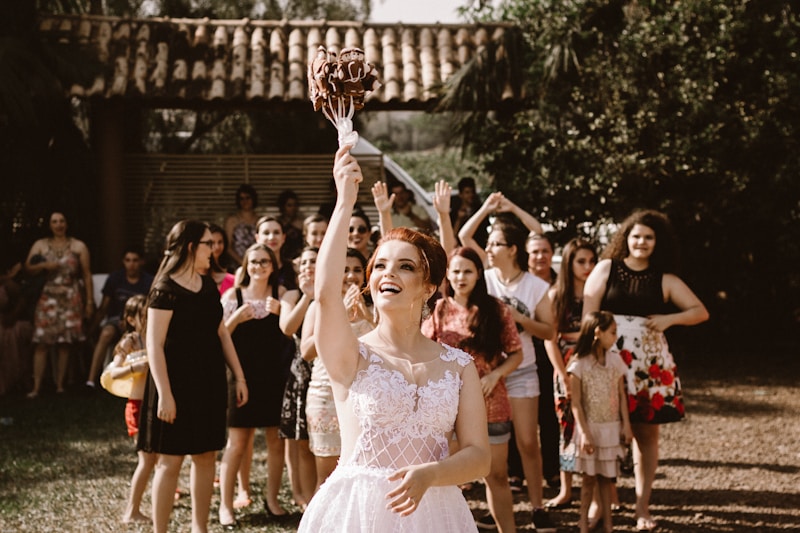Bridal Purchase Timing: Key Phases and Milestones for the Perfect Wedding
Understanding Bridal Purchase Timing
Planning a wedding can be both exhilarating and overwhelming. One of the crucial aspects of preparing for your special day is understanding the right bridal purchase timing. Knowing when to buy your wedding essentials can make all the difference in ensuring a smooth and enjoyable experience. In this article, we will explore the key phases and milestones of bridal purchasing, so you can be well-prepared for your big day.
Why is Bridal Purchase Timing Important?
Wedding planning involves many components including venue selection, attire, catering, and decor. Each of these elements has its own timeline, and understanding when to purchase what can help you avoid last-minute stress and potential budget overruns. Bridal purchase timing ensures that you secure the best options before they sell out and allows ample time for fittings, alterations, and any unforeseen delays.
Key Phases of Bridal Purchase Timing
There are several critical phases in the bridal purchase process. Here, we break them down by timeline:
| Timeframe | Milestones | Recommendations |
| 12+ Months Before | Engagement Party & Venue Booking | Start researching venues and book your preferred date as soon as possible. |
| 9-12 Months Before | Bridal Attire Shopping | Begin shopping for your wedding dress and bridesmaid dresses. Consider fabric, style, and customizing options. |
| 6-9 Months Before | Vendors & Decor Choices | Book your vendors including photographers, caterers, and florists. Start planning decor elements. |
| 3-6 Months Before | Final Dress Fittings | Schedule final fittings for your bridal dress and attendants' outfits. |
| 1-3 Months Before | Finalize Guest List & Send Invitations | Confirm your guest list and send out invitations. Follow up to ensure RSVPs. |
| 1 Month Before | Finalize Details | Confirm all details with vendors and rehearse the ceremony with key participants. |
Important Milestones to Consider
Engagement Party Planning
The engagement party is often the first big celebration after the proposal. It sets the tone for your wedding planning journey. Make sure to set a date and send out invitations early, allowing you plenty of time to coordinate. You can use this event to announce your wedding date to family and friends.
Choosing the Right Venue
Securing your venue should be a priority. Popular venues can book up to a year or more in advance, especially in peak wedding seasons. Take the time to tour multiple locations and understand what each offers. Remember to think about the size of the venue and how it aligns with your guest list. Your venue will significantly influence your overall wedding theme and decor.
Bridal Attire Selection
Shopping for bridal attire is one of the most exciting yet intricate parts of wedding planning. Aim to start this process at least nine to twelve months before the wedding. This timeline allows enough leeway for custom alterations, as most bridal gowns require multiple fittings. When selecting your dress, consider timeless styles that you will appreciate years down the line. Don’t forget to include your wedding party in the conversation for cohesive aesthetics!
Vendors and Decor
Once your venue and attire are sorted, it's time to think about the vendors and decor elements. This phase often takes around six to nine months before the wedding day. Research and book your vendors early to secure your desired professionals, whether it's a florist, photographer, or catering service. During this time, create a vision board for your wedding decor. Gather inspiration from magazines, Pinterest, and real weddings to refine your style.
Final Touches Before the Big Day
As your wedding day approaches—within the final month—focus on finalizing details. Confirm your guest count, double-check that your invitations are sent, and follow up with the vendors. Schedule final fittings for your attire. It’s also helpful to create a timeline for your wedding day so everyone involved knows what to expect.
Frequently Asked Questions
How early should I start planning my wedding?
It’s best to begin planning your wedding as soon as you’re engaged. Starting 12-18 months in advance provides enough time to secure key vendors, find your dream venue, and shop for your bridal attire without rushing the process.
What are some common wedding budget tips?
Establish a realistic budget early in the planning process. Prioritize your expenses by determining what’s most important to you and allocating funds accordingly. Look for packages that offer bundled services or off-peak season rates for better deals.
How do I create a wedding planning timeline?
Creating a detailed wedding planning timeline can help streamline your process. List key milestones and their deadlines, factoring in time for consultations, fittings, and vendor selections. Regularly reviewing this timeline will keep you organized and on track.

Conclusion and Recommendations
Bridal purchase timing is an essential element in planning the perfect wedding. By understanding the key phases and milestones, you will navigate the planning process with confidence. Make sure to start early, keep your budget in check, and embrace the journey. As the day approaches, remember to enjoy the process and celebrate the love that has brought you to this incredible milestone.
In summary, consult this guide for key insights into planning and purchasing for your wedding. It’s never too soon to start organizing your dream day!